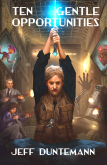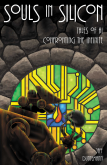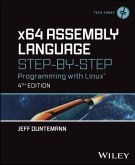Back in the spring of 1976, my friend Gus Flassig showed me an issue of a new magazine called Dr. Dobb’s Journal of Computer Calisthenics and Orthodontia, a thin but sprightly fanzine-ish item full of articles on programming the Altair, the Kim-1, and other primordial micros. The opcodes were thick as flies, but it was very cool in a slightly goofy bit-hippie way that none of us would appreciate yet for a number of years. I subscribed off and on for a long time, though I gave away a lot of the mags when I left Rochester NY in early 1985. In early 1989, I became a DDJ columnist myself, and wrote “Structured Programming” for over four years, focusing on Pascal but occasionally Modula 2 and related issues like database techniques. I had to give it up after I started my own publishing company and that quickly became several full-time jobs, but I will always be proud to have had that slot when I did, and will always cite Jon Erickson as one of the best technical media editors who has ever lived.
This is starting to sound like a euology, right? And that’s my point for this entry: DDJ is going all-Web with the January 2009 issue. The news was broken on the blog of Herb Sutter, a C++ force and long-time DDJ columnist. The entry is notable because Herb speaks of many other “ascent into the Cloud” events within the physical media world. It’s happening a lot. The big question remains: Is this a death sentence? It certainly was for Byte, and I can’t imagine that it won’t be for PC, though I could and would like to be wrong.
I’ve always liked magazines, as both a reader and a publisher, and if the magazine business model were still viable I would still be running one. Herb Sutter doesn’t say much about why magazines are fading away. Most people probably think it’s because of the cost of the paper, the cost of mailing, and so on. That’s certainly part of it, but we shouldn’t forget the following things:
- Computer technology has gotten fearsomely complex in the last ten or fifteen years. It’s very difficult to treat a programming topic usefully at magazine length. I was confronting this issue as early as 1995.
- As a corollary to the previous point, people are increasingly becoming specialists, of increasingly narrow specialties. This used to break down by languages (“I’m a C/C++ guy”) but ballooning complexity is cutting out niches much finer than that. (“I’m a client-side .NET IL guy.”) There simply isn’t enough time nor mental bandwidth to learn everything, and a magazine’s reader base can only be so small and remain economically viable.
- The community elements of magazines (letter columns, Q/A columns, columnists treating reader requests, etc.) are now handled very capably by online forums, blogs, and other social networking mechanisms.
Money of course, remains an issue. Paper and postage cost money, which print ads traditionally provided. (Subscriber revenues are useful but not sufficient to float a decent mag, and this was true even in 1998.) It’s an issue for Web content as well. Authors and editors need to be paid, and server space is cheap (compared to paper channels of comparable bandwidth) but it is not free. I almost hate to say this, but the transition from commercial software to free software makes an ad-based model very difficult. My magazines lived on smallish ads from smallish tool companies, and the sorts of things they used to sell are now free downloads. This is in part a consequence of the fact that personal computing is now mature, and software tools that used to become obsolete in six months can now be used for years and perhaps indefinitely without regular, radical rewrites.
We forget sometimes what made magazines so compelling: The element of surprise. Magazines exposed us to ideas and technologies and products that we might not have discovered on our own. (This is precisely why broadcast radio is important to the music industry.) The Web world is a search-engine world, and we generally ascend into the Cloud looking for something very specific, and it is in the nature of clouds to make things difficult to see unless they’re right in your face. Search engines encourage us to become better and better at what we already know, further accelerating the natural trend toward specialization in the face of increasing complexity. Magazines tended to broaden our horizons, and they were useful bathroom reading too. Pervasive home Wi-Fi is eroding even this ancient bastion of print publishing, and once a decent convertible (tablet-like) netbook matures, well, the bathroom magazine rack may vanish, and be replaced by an EEEEEEE PC in a wall-mounted charging dock.
So I would like to see DDJ continue as a viable entity, and it may, but it has to be done very carefully. It also has to be done well. One way for them to proceed is to look around the Cloud and see what’s already there and works. Make, Lockergnome, and Slashdot may already be “magazines,” and Cloud portal platforms like Mambo and Joomla can work well when intelligently configured. We still need to figure out where the money will come from, and we must remind ourselves that reading outside our core preferences is a powerful intellectual advantage. There’s a pony up there somewhere. Let’s all of us, readers and editors alike, keep looking.
 Boy, I sure wasn’t expecting this: An email this morning from Lulu informed me that my SF story collection Souls in Silicon was now being offered through Amazon Marketplace at its $11.97 cover price–not cover plus 30%, as I reported in my May 29, 2009 Odd Lots entry. It’s evidently a test program of some kind, and not all Lulu books are included; in fact, of the eight Copperwood Press titles, Souls in Silcon is the only one in the program. Somebody’s giving up significant margin here, and odds are it’s not Amazon.
Boy, I sure wasn’t expecting this: An email this morning from Lulu informed me that my SF story collection Souls in Silicon was now being offered through Amazon Marketplace at its $11.97 cover price–not cover plus 30%, as I reported in my May 29, 2009 Odd Lots entry. It’s evidently a test program of some kind, and not all Lulu books are included; in fact, of the eight Copperwood Press titles, Souls in Silcon is the only one in the program. Somebody’s giving up significant margin here, and odds are it’s not Amazon.










